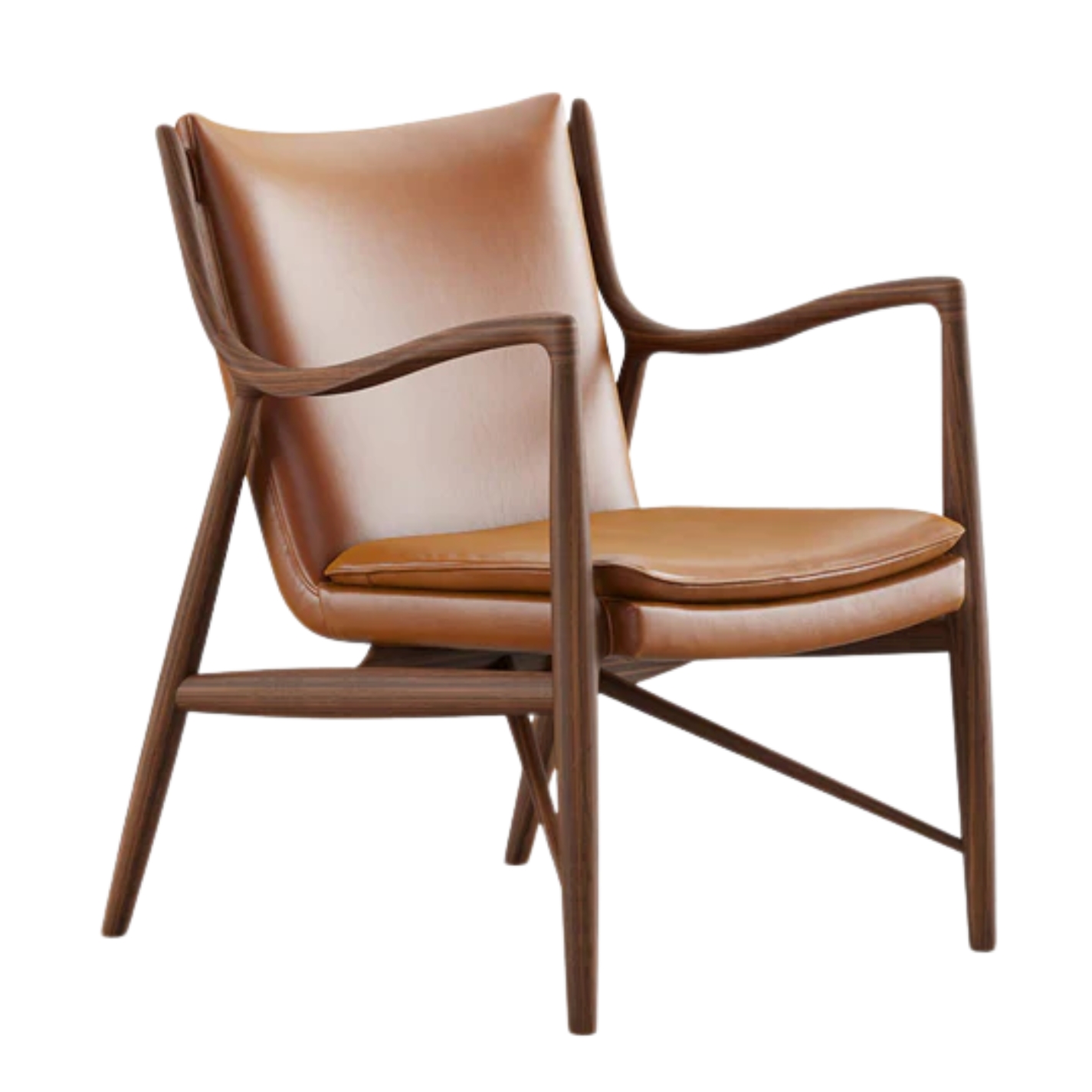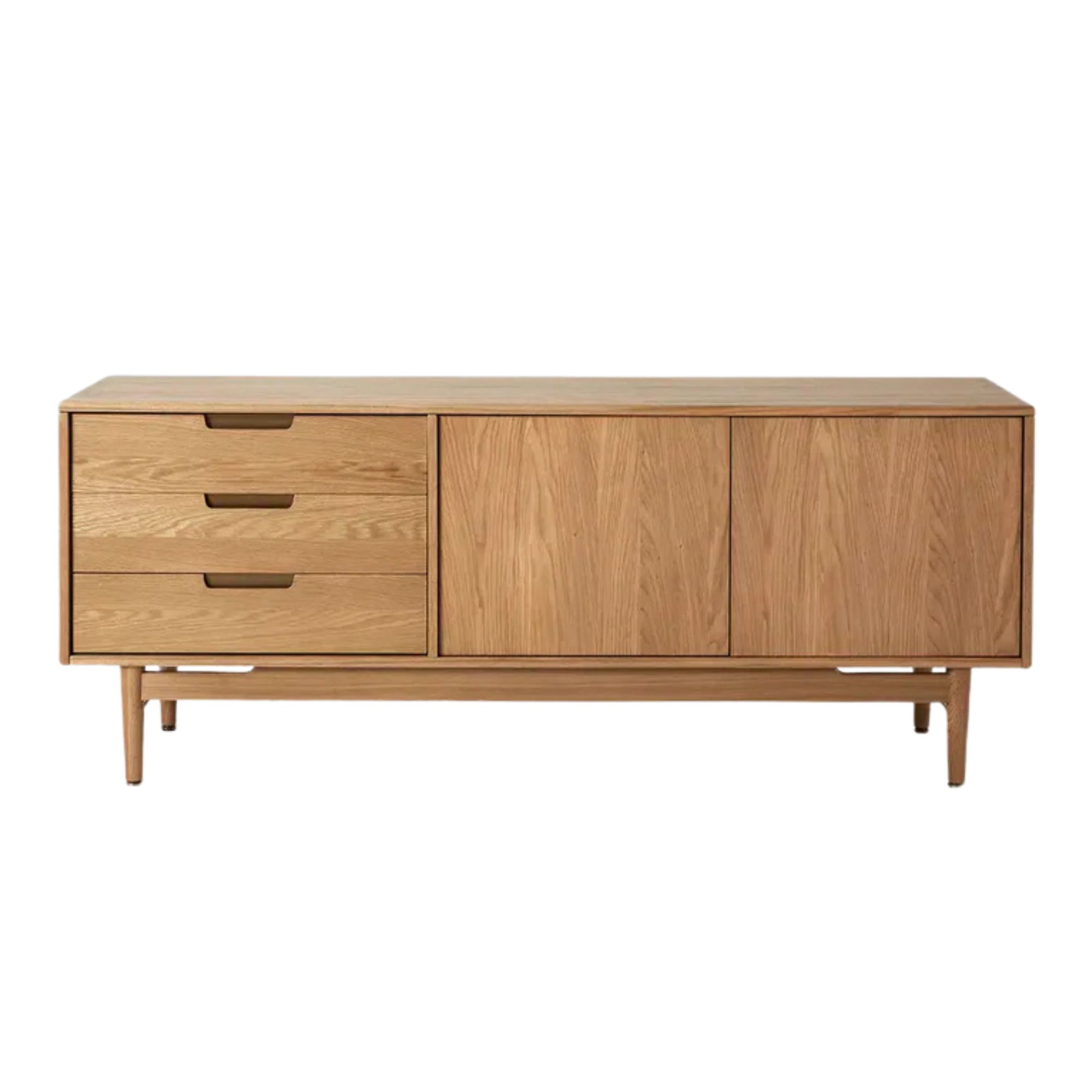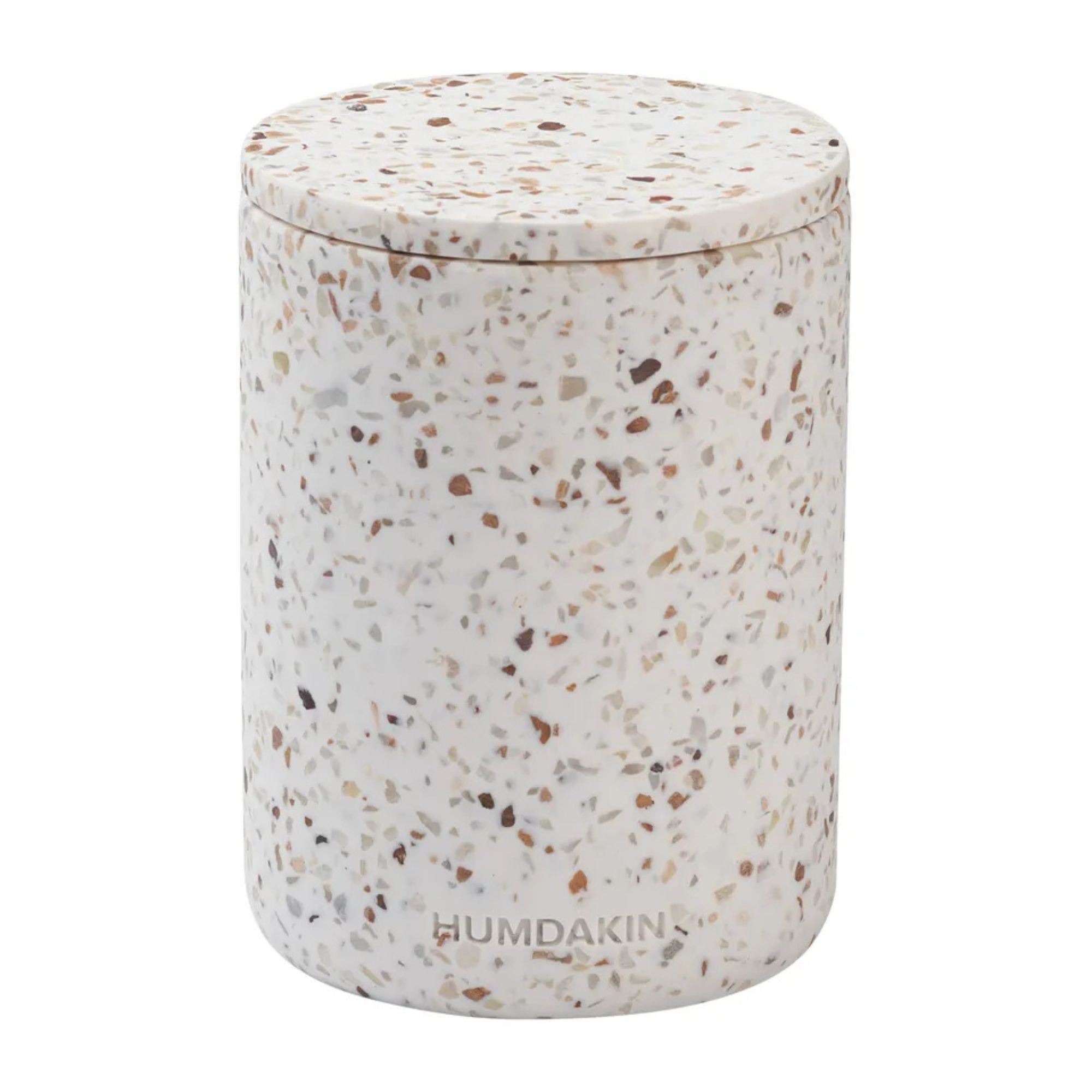Scandinavian vs Mid-Century Modern — These Celebrated Design Styles Are More Similar Than You Might Think
Both are enduring favorites and iconic in their own right, but do a little digging and you may discover they also share quite a few similarities, too
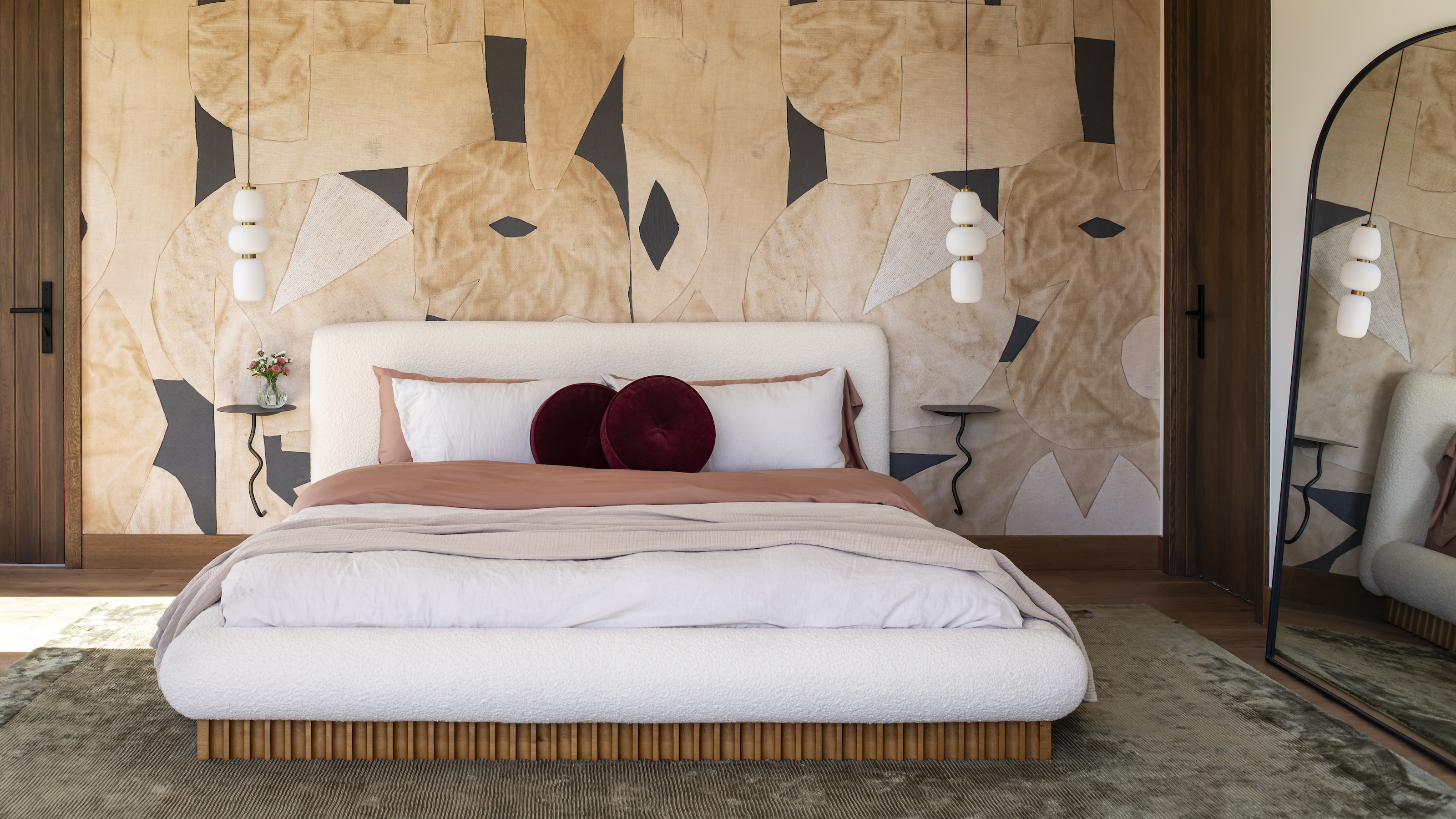

When you think of Scandinavian vs mid-century modern, distinct looks will likely immediately suggest themselves. Mid-century modern's saturated colors and geometric patterns create a clear contrast to the light and airy palette and restrained coziness typical of the Scandi style.
But while distinct, these design styles still share many features in common, including their use of clean lines and natural materials. And because it was the 1950s that saw Scandinavian design come to prominence in the US, some of the movement's most celebrated pieces are, in fact, common features of mid-century modern homes.
In order to further educate ourselves on how to identify both the distinctions and commonalities, we asked interior design experts to compare and contrast the styles, as well as share a bit of history behind both. Here's what you need to know.
A Brief History
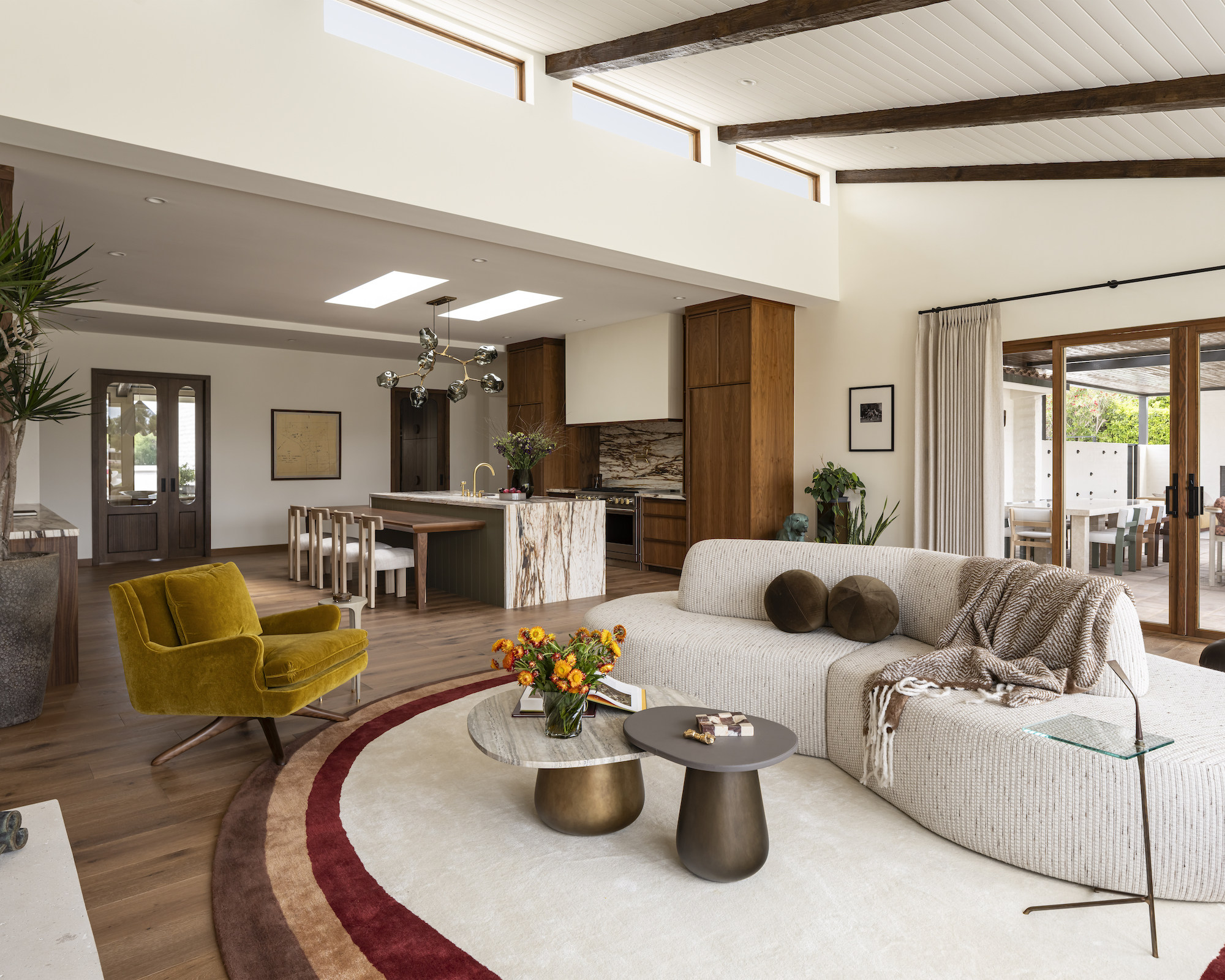
Inspired by mid-century style, bold walnut tones, retro colorways, and sculptural furnishings give the living space of this 1977-built home life.
While a Scandinavian design movement can be traced back to the beginning of the 20th century, it was from the 1930s that it achieved wider recognition around the world. “It was made famous by designers like Alvar Aalto, Hans Wegner, and Arne Jacobsen,” says Todd Howard Ezrin, principal at TOBE DesignGroup. “Its roots stem from simplicity, functionalism, and new industrial materials.”
As for its impact on the US, it was the 1954 Design in Scandinavia exhibition at the Brooklyn Museum that catapulted the trend for Scandinavian modern. It was also in this period that the design style came to intersect with mid-century modern. “Mid-century modern design was an American response that began in the 1950s as a reaction to the ornateness of earlier periods and was aligned with the modernist movement,” says Todd.
Todd Howard Ezrin is principal of the TOBE DesignGroup, celebrated for crafting sustainable, elevated interiors with a strong focus on multifamily residential design. A third-generation Washingtonian with degrees in both interior design and business, he brings a rare blend of artistry and strategy to every project. He is NCIDQ-certified, LEED-accredited, and a proud member of ASID.
The idea of 'home' was a catalyst for both. “Scandinavian and mid-century modern design both came out of the same postwar desire to make the home feel more human, more livable, more thoughtful, and more connected to the way people actually use their space,” adds Brittny Smith, owner and principal designer at Homesmith Design.
But while they had the same prompt, the styles deviated. “Scandinavian style, which has its roots in northern Europe, was shaped by a need for light and warmth during long winters,” notes Brittny. “That’s where you get all the pale woods, layered textures, and cozy restraint.”
The Livingetc newsletters are your inside source for what’s shaping interiors now - and what’s next. Discover trend forecasts, smart style ideas, and curated shopping inspiration that brings design to life. Subscribe today and stay ahead of the curve.
“Mid-century modern design, while overlapping in timeline, took shape in the US and leaned a little more into the experimental side,” she adds. “It’s still clean-lined and functional, but there’s more boldness to it, strong geometry, saturated color, and a playfulness that comes through in the architecture and furnishings.”
Brittny Smith is the owner and creative director of Homesmith Design. With a bachelor’s degree from the University of Arkansas, Brittny began her career collaborating with top interior designers and photographers, which fueled a passion for home design, leading her to transition exclusively to designing homes for clients in 2018. Since establishing Homesmith Design in 2020, Brittny and the team have quickly established a reputation as a solutions-oriented design firm, delivering tailored and innovative spaces for clients.
The Similarities and Differences
There is a crossover between mid-century modern and Scandinavian styles because they both developed during the same period, and, due to this, Scandinavian designs such as Finn Juhl’s lounge chair and Poul Henningsen’s Artichoke lamp are celebrated as iconic mid-century modern furniture and decor.
But there are also characteristics in common. “Simplicity, clean lines, and no ornamentation are the hallmarks of both Scandinavian and mid-century modern design,” says Todd Howard Ezrin. “Both design styles have a strong connection to nature, and both wood and leather are common materials.”
However, there are also clear distinctions, and it’s worth understanding where Scandinavian and mid-century modern styles differ as well as the ways that they are similar. Below, we break down the use of lines, materials, color palettes, and motifs.
Lines
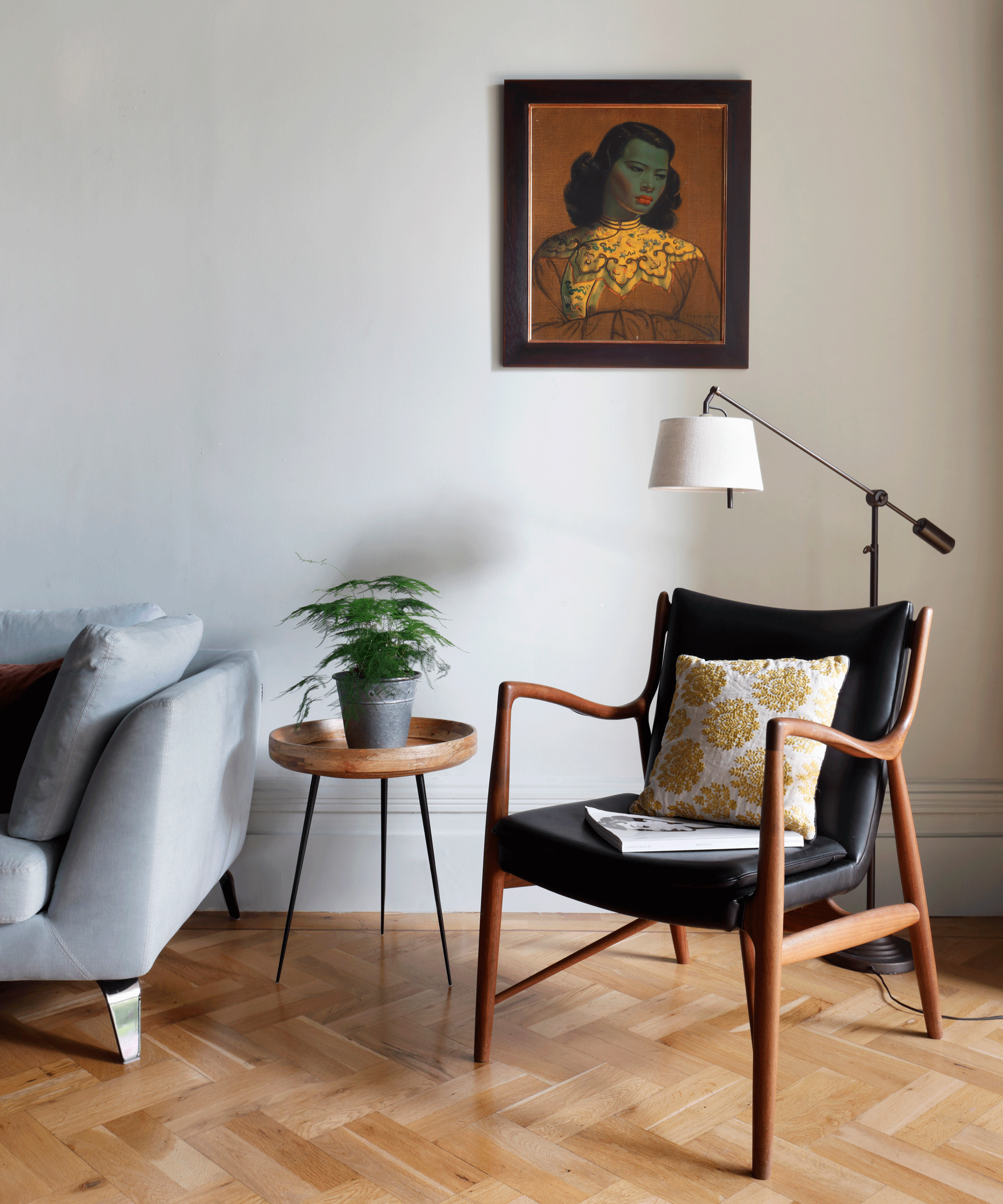
The clean angular lines of this mid-century modern armchair make an impression in this living room.
There are some resemblances between the two styles when it comes to lines, but they aren’t the same. “Both styles emphasize clean and uncluttered lines, but their approach is slightly different,” notes Caitlin Maestrini-Sowers, founder of Teak New York.
“The Scandinavian style tends to favor softer, organic curves mixed with straight lines," she adds. "There’s often a sense of calm and comfort in the silhouettes. Mid-century modern embraces bold, geometric forms that tend to be more angular and graphic.”
Caitlin Maestrini-Sowers is the founder and CEO of Teak New York, which specializes in Scandinavian design. She holds a master’s degree in art business from Sotheby’s Institute of Art, and comes from a background in luxury design with previous stints at Flos, 1stDibs, and Collective Design Fair. Mid-century modern holds a special place in her heart, fueled by her time as a tour guide at Frank Lloyd Wright’s Fallingwater, where she also researched the architecture, designs, and life of the architect.
Materials
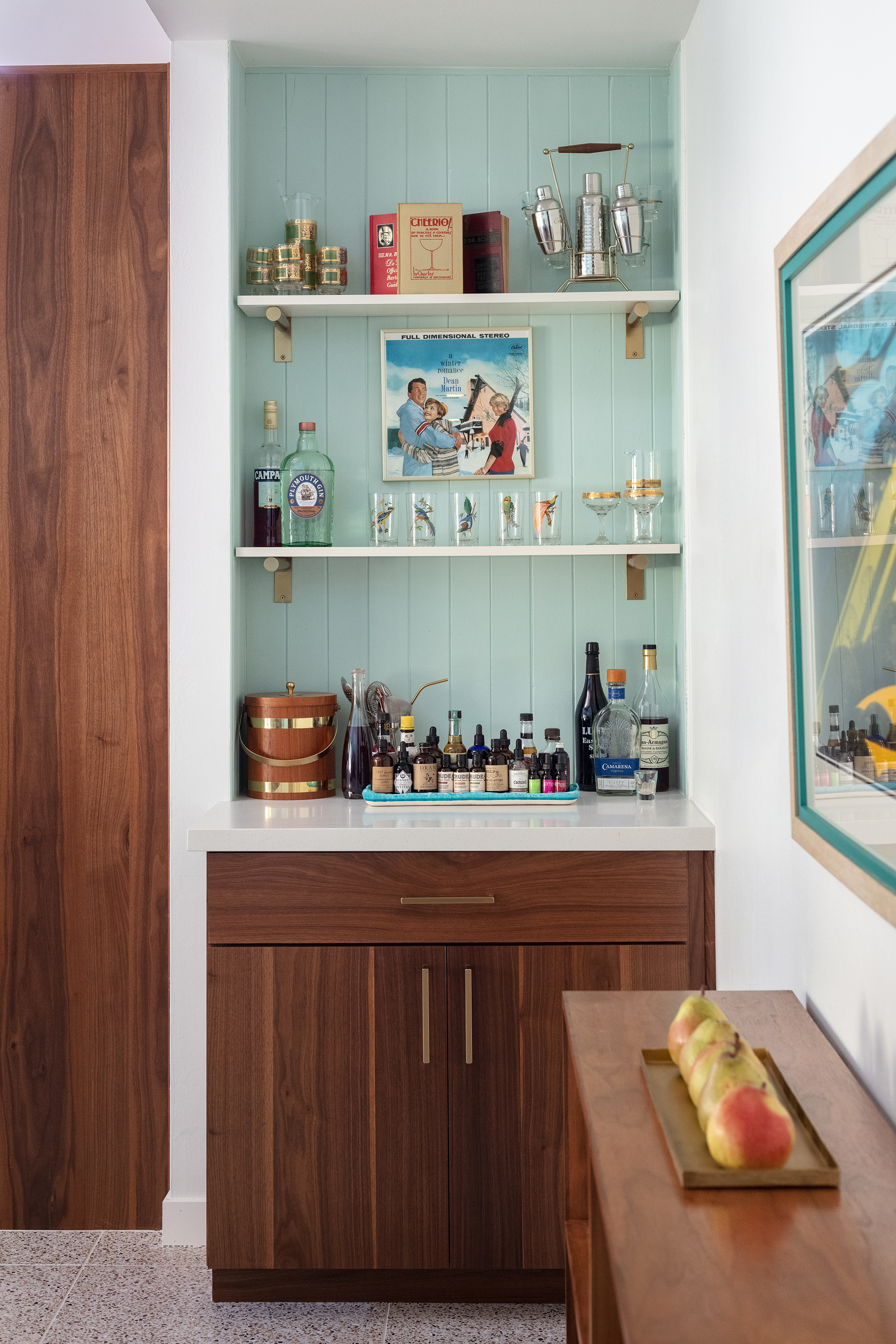
Embrace dark wood finishes for a mid-century look. Here, it’s used for a home bar.
There are materials in common between Scandinavian and mid-century modern, but those of the latter often feature deeper tones against the lighter shades of the former.
“Scandinavians have a heavy use of light woods like beech, ash, and pine, along with wool, linen, and leather,” says Caitlin. “Mid-century modern incorporates a broader mix of materials like teak, walnut, metal, glass, plywood, and early plastics like fiberglass. The designers of the mid-century were more experimental in decorating with color and industrial materials, which led to unique silhouettes.”
Color palettes
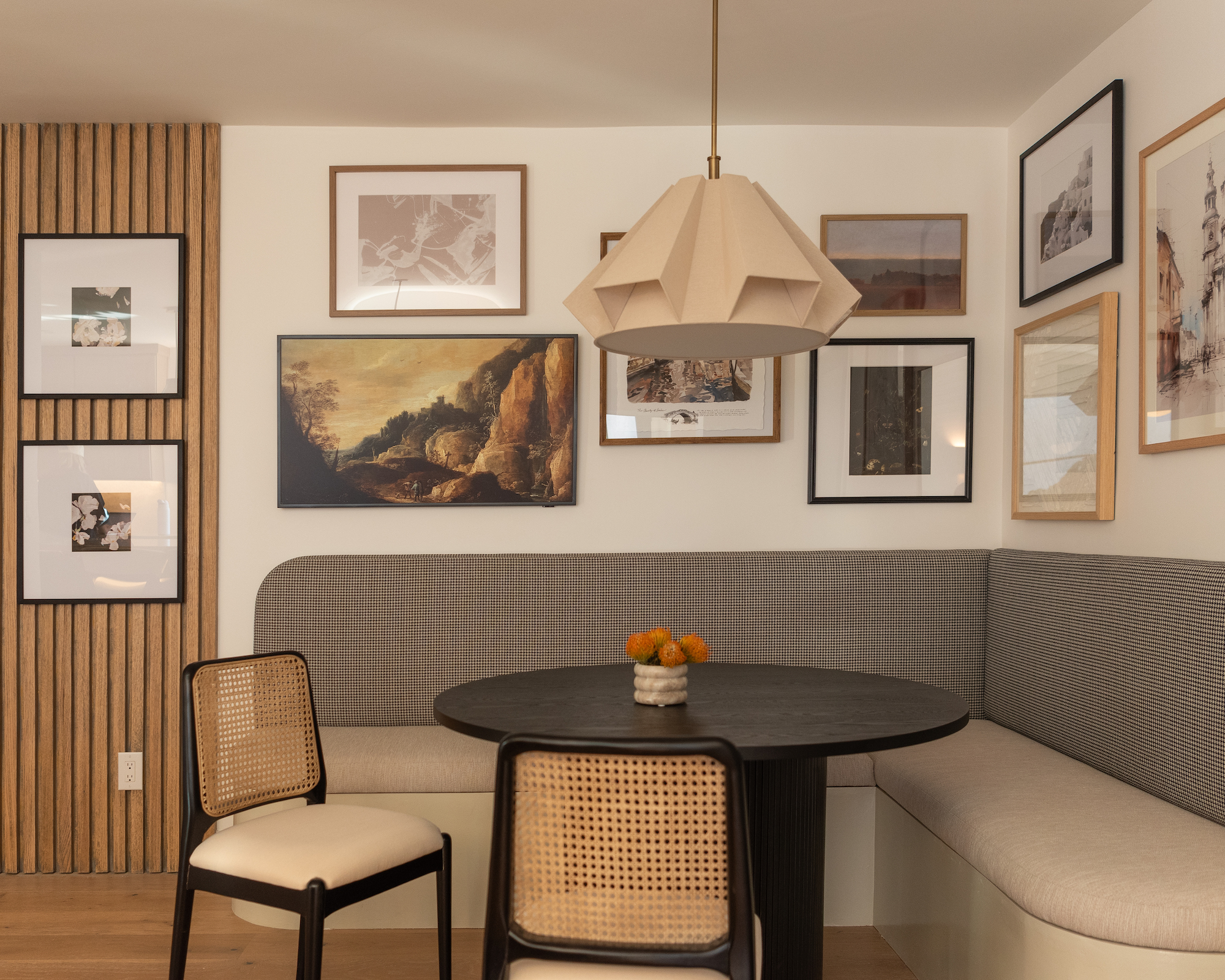
Scandinavian influences are seen in the light palette, subtle materials and the quiet simplicity of this interior.
The color palettes of the two styles are typically distinct. “Scandinavian design tends to be calmer and neutral — white, gray, and light wood tones — while mid-century modern design incorporates bolder colors, geometric patterns, and is more playful — think mustard yellow, teal, and orange,” says Todd Howard Ezrin.
However, embrace the influence of today’s Scandi design, and the choice is broader than just decorating with neutrals. “In the contemporary millennium, many people are embracing a wide range of color palettes,” adds Caitlin Maestrini-Sowers.
Motifs
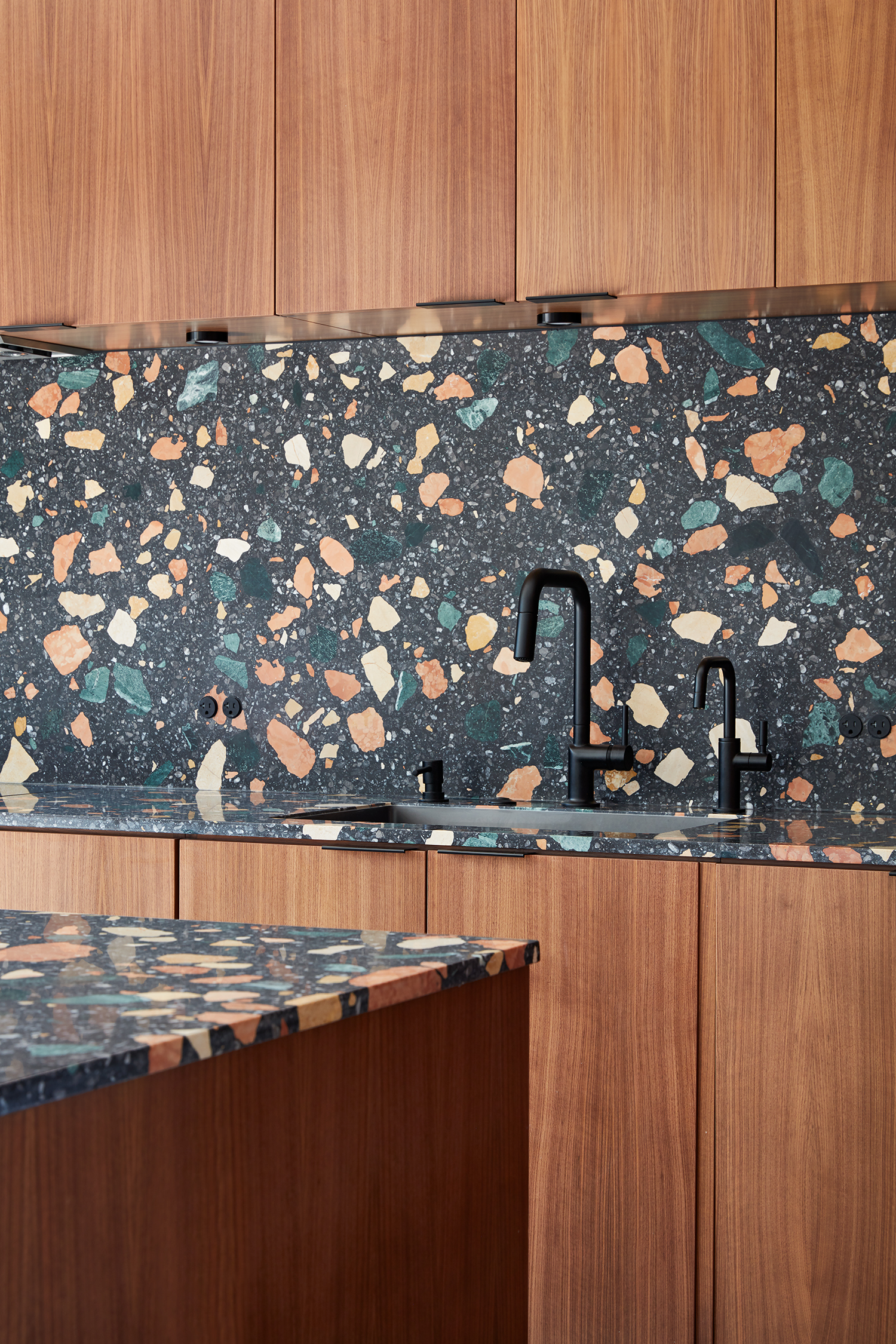
Terrazzo, seen on this kitchen backsplash and countertop, was a staple of mid-century design, although it has a history that reaches further back.
If you want to introduce pattern in a room influenced by either of these styles, be mindful of the differences.
“In Scandinavian culture, the designers are directly inspired by nature, including leaves, animals, and folklore in textiles,” says Caitlin Maestrini-Sowers. “Mid-century emphasizes abstract, atomic, and space-age interior motifs, especially in wallpapers and patterns.”
There’s no reason to discount the idea of introducing both Scandinavian and mid-century modern influences to your interiors since, says Brittny Smith, “they can be combined in unexpected ways”.
If you've already captured the essence of mid-century modern, why not explore the many ways to make your home feel more Scandinavian, to get the best of both worlds?

Sarah is a freelance journalist and editor. Previously Executive Editor of Ideal Home, she’s specialized in interiors, property and gardens for over 25 years. She’s written for websites including Houzz, Channel 4’s flagship website, 4Homes, and Future’s T3; national newspapers including The Guardian; and brands including Future’s Homes & Gardens, Country Homes & Interiors, Homebuilding & Renovating, and Period Living, as well as House Beautiful, Good Homes, Grand Designs, Homes & Antiques, and The English Home among others. It’s no big surprise that she likes to put what she writes about into practice, and is a serial house renovator.
